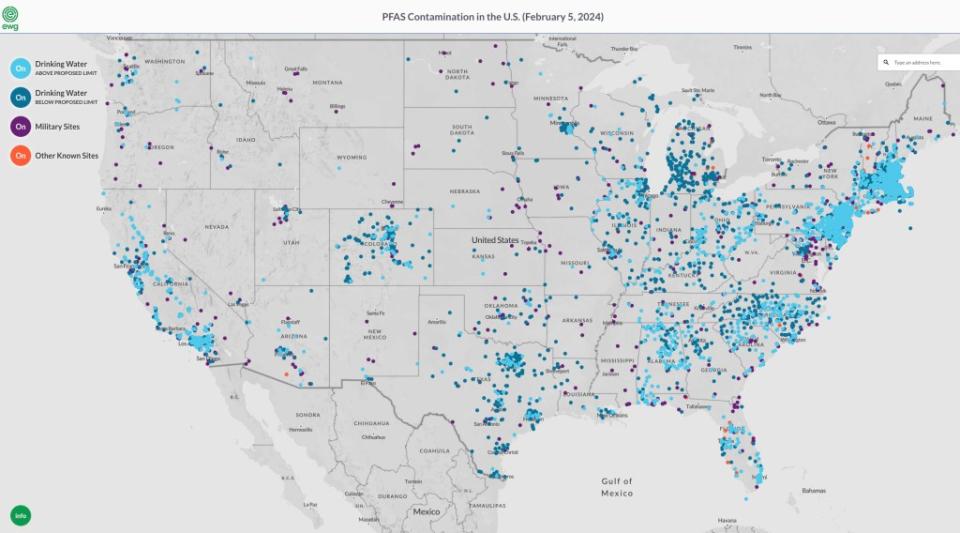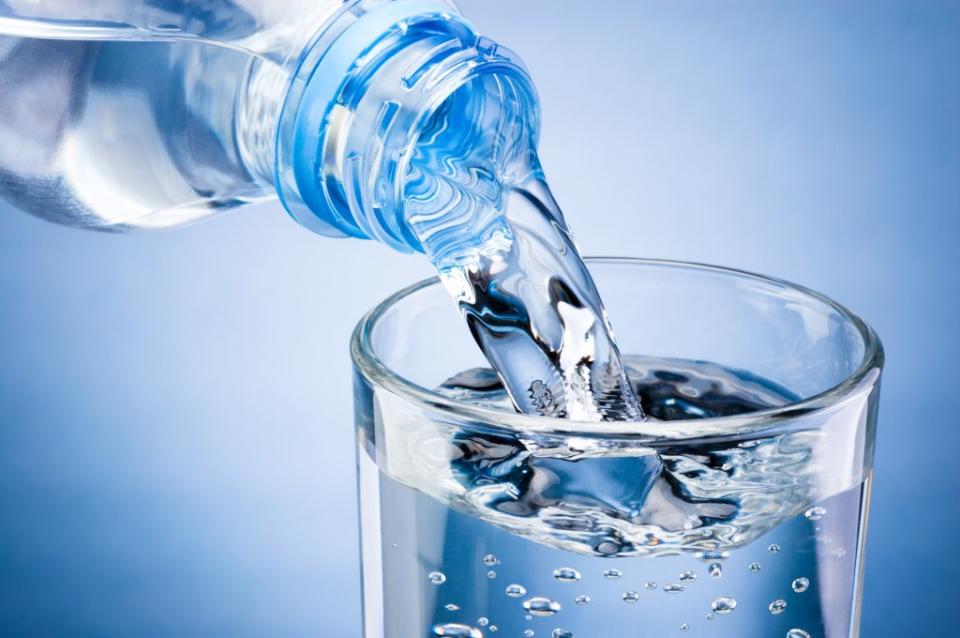Here’s what you can do about PFAS in your drinking water

Water, water everywhere.
On Wednesday, the Biden Administration announced strict limits on so-called “forever chemicals” — or PFAS — found in drinking water.
Experts estimate this could prevent thousands of illnesses, including cancer and other types of chronic conditions, and reduce exposure for 100 million people.
But what, exactly, does this mean for you and your drinking water? Should you just be buying bottled water? Below, everything you need to know about PFAS and how safe the H2O coming out of your faucet really is.
What are PFAS chemicals?
PFAS, or per- and polyfluorinated substances, were invented in the late 1930s and have been used to make coatings and products that resist heat, grease, stains, oil and water, according to the Centers for Disease Control and Prevention. PFOS and PFOA are two of the most common types of PFAS.
The chemicals can be found in everything from furniture to non-stick cooking pans, food packaging and even in electrical wiring. They’re primarily a concern because they don’t break down and can move through the soil and drinking water — hence the “forever chemicals” moniker.
As early as 1999, the CDC began detecting forever chemicals in blood serum. They found the chemicals present in almost all people tested, which means exposure to these chemicals is pervasive and potentially unavoidable. The chemicals have even been found in breastmilk, meaning that exposure to such chemicals can start from a very young age.
At this point in time, the CDC says that more research is needed to fully understand the effects of these chemicals, however they’ve been linked to a number of adverse health conditions, including high blood pressure and preeclampsia during pregnancy, changes in liver enzymes, increases in cholesterol, lower antibody responses to vaccines and kidney and testicular cancers, reports the CDC.
What does the new EPA regulation mean?
The EPA announced on Wednesday that PFOA and PFOS could not exceed four parts per trillion in drinking water; and three additional PFAS are being restricted to 10 parts per trillion, reports NBC News.
These are the lowest levels that can be reasonably detected and treated in the public water supply, however the EPA advises that water systems should still try to eliminate the chemicals entirely because no level of exposure is safe.
“One hundred million people will be healthier and safer because of this action,” EPA administrator Michael Regan said Tuesday on a media call, according to NBC News.

Are there PFAS in tap water?
In short, probably. According to a study released last year, about 45% of the tap water in the US contains PFAS.
Testing both private and public water supplies, “the study estimates that at least one type of PFAS – of those that were monitored – could be present in nearly half of the tap water in the US,” study lead author and research hydrologist Kelly Smalling, said in a release at the time. “Furthermore, PFAS concentrations were similar between public supplies and private wells.”
Prior to the regulations that were just announced, eleven states already had maximum contaminant level regulations in place to limit the amount of PFAS in water. Those states include: Maine, Massachusetts, Michigan, New Hampshire, New Jersey, New York, Pennsylvania, Rhode Island, Vermont, Washington and Wisconsin, according to Safer States.
But living in those states doesn’t necessarily mean you’re in the clear. For example, although New York has some of the strictest regulations in the country, Environmental Advocates NY says some 300 systems will need to be updated to meet the new EPA regulations, according to Fox5.
The EPA estimates that 6% to 10% of the country’s public water systems will need to make updates in order to meet the new regulatory standards.
And drinking bottled water may not be a perfect solution either. Besides being expensive, a study from 2021 found that 39 out of 101 different bottled waters that were tested also contain some type of PFAS. (The study did not identify which brands were tested.)
Can water filters make your tap water safer?

Finally, some good news! Depending on the type of water filter you’re using, yes, you can remove PFAS from your drinking water.
“To remove a specific contaminant like PFAS from drinking water, consumers should choose a water filtration device that is independently certified to remove that contaminant by a recognized lab,” Jim Nanni, associate appliance director at Consumer Reports advised.
The Environmental Working Group also noted that the filtration system is only as good as its filter — and you need to change those frequently. “If you don’t change [the filter], and it becomes saturated, the levels of PFAS in the filtered water can go above the levels coming from the tap,” Tasha Stoiber, a scientist who studies environmental chemistry and technology, told EWG.
In short, you should look for water filters that are tested by a third party, like the National Sanitation Foundation, Water Quality Association, International Association of Plumbing & Mechanical Officials, UL Solutions, CSA Group or Intertek, according to Consumer Reports.
Under-the-sink options might be more expensive, but are likely to last the longest and be the most effective; although filters that attach to the faucet and water pitcher filters can also be effective.
Just keep in mind: Although boiling water will kill other types of bacteria, it will not get rid of PFAS.

